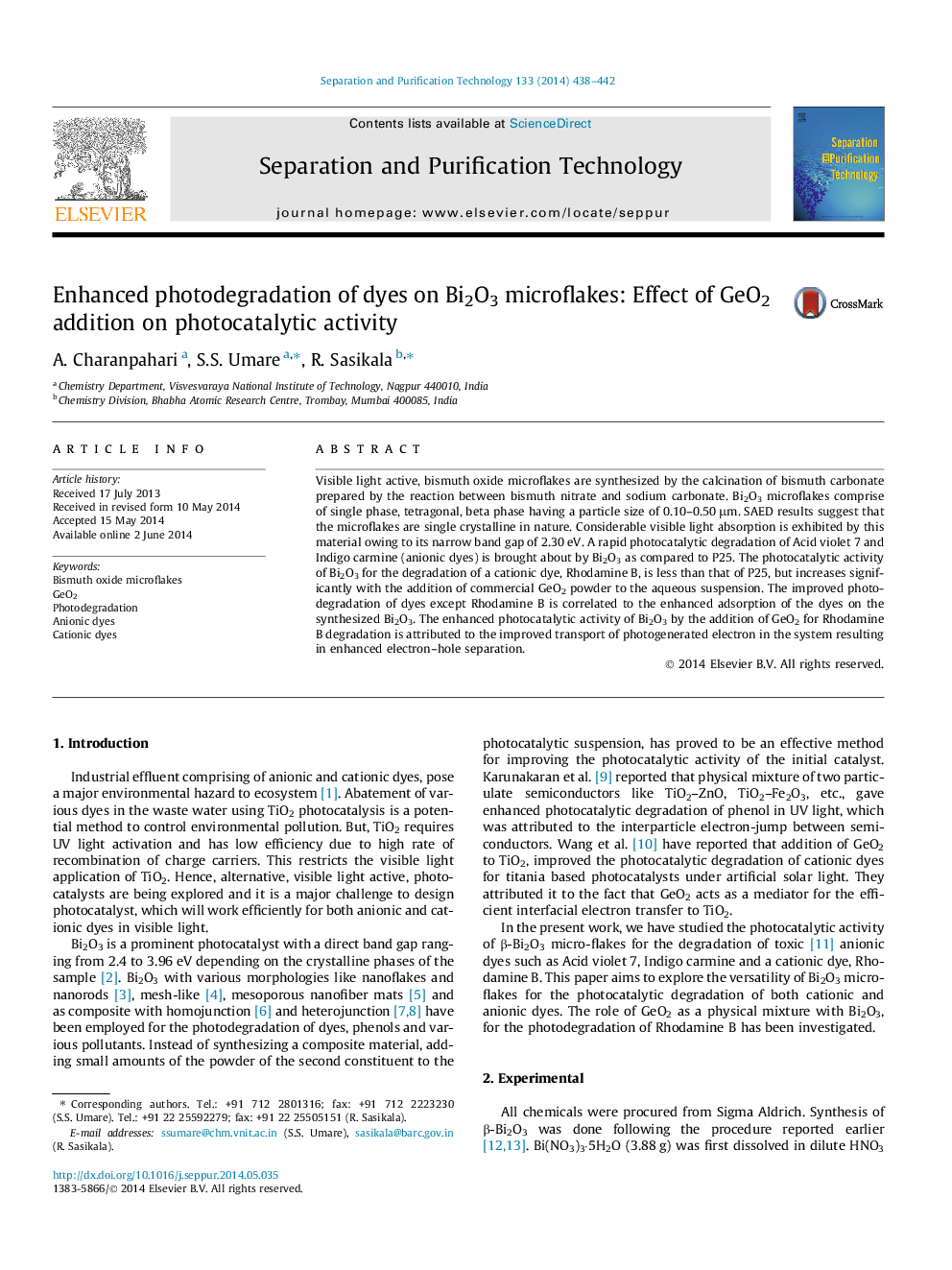| Article ID | Journal | Published Year | Pages | File Type |
|---|---|---|---|---|
| 640940 | Separation and Purification Technology | 2014 | 5 Pages |
•Single crystalline, β-Bi2O3 microflakes were synthesized.•Bi2O3 (Eg = 2.30) had considerable visible light absorption.•Rapid degradation of Acid Violet 7 and Indigo carmine by Bi2O3 observed.•Enhanced degradation of Rhodamine B (RhB) by Bi2O3 and GeO2.•Improved electron–hole separation due to addition of GeO2 for RhB degradation.
Visible light active, bismuth oxide microflakes are synthesized by the calcination of bismuth carbonate prepared by the reaction between bismuth nitrate and sodium carbonate. Bi2O3 microflakes comprise of single phase, tetragonal, beta phase having a particle size of 0.10–0.50 μm. SAED results suggest that the microflakes are single crystalline in nature. Considerable visible light absorption is exhibited by this material owing to its narrow band gap of 2.30 eV. A rapid photocatalytic degradation of Acid violet 7 and Indigo carmine (anionic dyes) is brought about by Bi2O3 as compared to P25. The photocatalytic activity of Bi2O3 for the degradation of a cationic dye, Rhodamine B, is less than that of P25, but increases significantly with the addition of commercial GeO2 powder to the aqueous suspension. The improved photodegradation of dyes except Rhodamine B is correlated to the enhanced adsorption of the dyes on the synthesized Bi2O3. The enhanced photocatalytic activity of Bi2O3 by the addition of GeO2 for Rhodamine B degradation is attributed to the improved transport of photogenerated electron in the system resulting in enhanced electron–hole separation.
Graphical abstractFigure optionsDownload full-size imageDownload as PowerPoint slide
